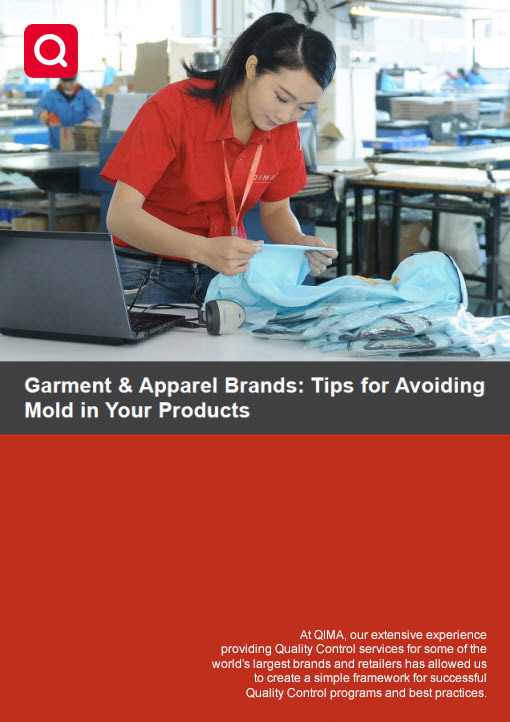Complimentary White Paper
Mise à jour technique AI : Comment Éviter la Moisissure sur vos Vêtements
Un aperçu des meilleures pratiques pour prévenir les pertes dans le secteur du textile et de l'habillement.
This White Paper will give you insights about :
- Les risques de moisissure pendant la production et le transport maritime, en particulier dans les zones au climat humide.
- Les mesures à prendre pour minimiser l'exposition à l'humidité de vos produits.
- Les bons produits anti-moisissure et les quantités à utiliser pour vous assurer que vos produits arrivent prêts à être vendus.
En téléchargeant ce contenu de QIMA, vous acceptez notre politique de confidentialité et nos conditions générales
Mold Risks Present in Global Apparel Supply Chains
South and Southeast Asia, which are home to the world’s garment manufacturing powerhouses, experience some of the highest annual rainfall globally. When sourcing from this region, anti-mold practices are a necessity, as mold can occur at any stage of production and shipping, easily resulting in 100% product loss unless effectively combated.
Organic materials, faux leather, and coated fabrics are particularly prone to mold. Other factors that influence the risk of mold are pre- and post-manufacturing treatments, storage, shipping time and route, weather conditions, and mold protection methods in place.
Critical Stages of Mold Prevention:
- Sourcing of raw materials and semi-finished products
- Production environment
- Storage during all production phases
- Washing/pressing processes
- Packaging
- Container shipping
Download the whitepaper for technical advice on mold prevention at every stage of your garment supply chain, as well as additional anti-mold safeguards for your textile and apparel products.


